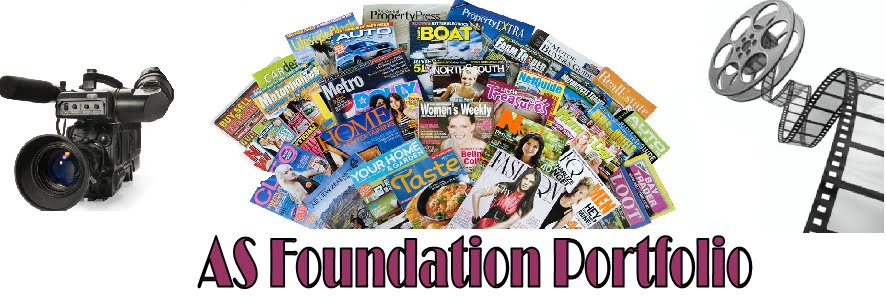As the main task involved constructing a double page spread feature of a music magazine, I researched an existing magazine article in order to glean the main features, conventions and language used. 
The article I looked at was from 'Mojo' magazine, featuring the band The Faces. The graphology of the piece is based upon a balance of image and text. The article is ranged across the left side of the feature with a right-orientated image, spanning the whole right page and half of the left. The main photograph is of the band's most notorious members, Ronnie Wood, Ronnie Lane and Rod Stewart. What is noticeable is the lack of caption denoting their names; which suggests their renowned status and also the expectation of the magazine in regards to the audience, in that they must know The Faces members. The band is presented in typical 70's rocker attire along with the mullet haircut, immediately indicating the time period. There is also a smaller minor image in the form of an old-fashioned photograph, creating a scrapbook feel to the article; as this is focusing upon the band's past successes.
The font used shows a block sans serif for the title and lead paragraph - recalling past show titles and show business. The main article text is different; smaller and serif. The by-line follows the leading paragraph directly, seeming to be part of the article itself. There is also a caption at the top of the main image detailing the context of the shot ("Backstage, Early 70's") and with an open quotation underneath from Tom Wright, the band photographer.
The band itself was notorious for their old school 70's rock and roll attitude; sex, drugs and plenty of groupies. Consisting of legends; Rod Stewart, Ronnie Wood, Ronnie Lane, Ian McLagan and Kenney Jones; the band enjoyed success with four albums before splitting in 1975. The article is therefore a reflection of their past, rather than a promotion of new material. It is likely then that the intended audience is preexisting fans rather than people looking to listen to some new artists, as they are no longer recording.
The text begins with a direct quote from the focus of the magazine, photographer Tom Wright. The 'voice' of the article is his memories of touring with the band and forms an informal, conversational tone. The journalistic tone comes from the creator of the text, Ross Bennett, forming a narration behind Wright's quotes, or filling in the gaps.
The text is littered with language requiring a shared understanding, "rythm'n'boogie boys", "The Jeff Beck Group", "The Who", "Gasoline Alley", and "boozy 4/4 blues and country-soul" all require a knowledge of music terms and bands; they are not explained, the writer seems to take it for granted that anyone bothering to read the article must understand what they are talking about.
There are also an excessive use of hyperbolic phrases, "satin-panted excesses of superstardom" and "uproarious bonhomie and killer performances" both suggest the importance and success of the band themselves, and perhaps the admiration of the author. The use of emotive and descriptive adjectives such as "scuzzy", "lavish" and "exclusively", help to create an idealised congratulatory feel of the band's success.



